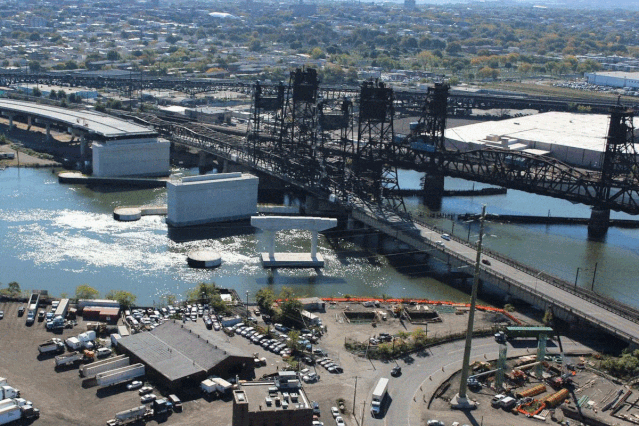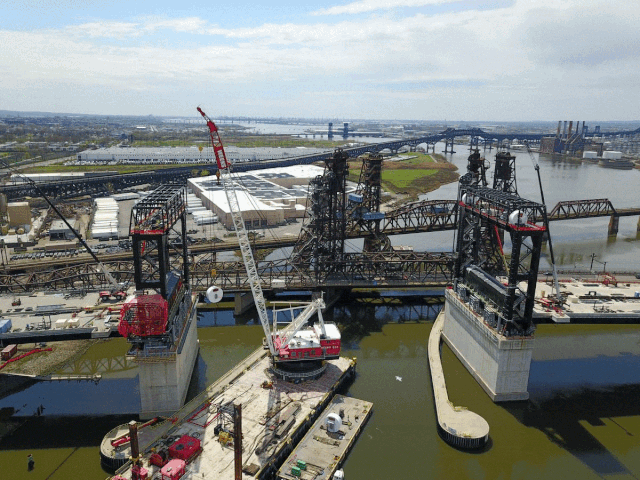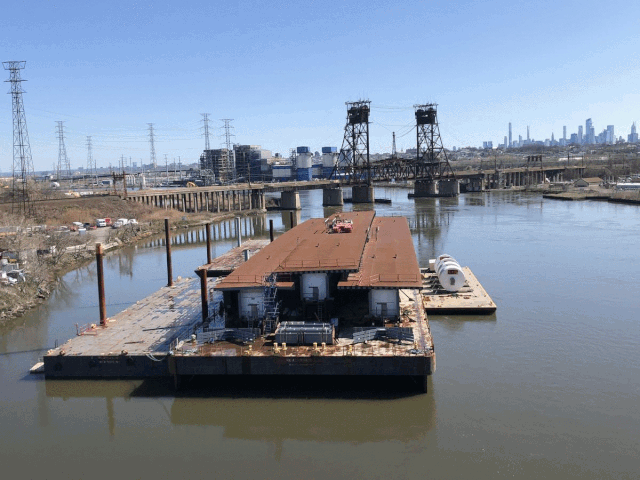As of April 14, China State Construction Engineering Corporation (CSCEC)’s Wittpenn Bridge project in the U.S. had made significant progress amid the COVID-19 outbreak. Located in the densely populated area on the border between New York and New Jersey, which also happens to be the epicenter of the outbreak in America, the construction had been torn between the outbreak and a pressing schedule. China Construction America (CCA), CSCEC’s subsidiary in the country, stepped up its coordinating efforts, and put together a team of around 40 workers on rotation shifts. With dynamic planning, stringent prevention measures, and efficient management, the team eventually managed to make significant project progress.

Four sets of sheaves and reducers had arrived on site in early April, coinciding with the peak of the outbreak. The project team strictly followed the instructions from the Centers for Disease Control and Prevention and the local government, and managed to carry forward the project despite multiple difficulties. Workers completed the sheaves erection and reducers installation, as well as the assembly of nearly 100 tons of steel components, including those of the control room, with zero accident and not a single case of coronavirus infection.

CCA won the bid for the third section of Wittpenn Bridge in 2015. This section, which contains the lift span portion, is the most crucial part of the vertical-lift bridge. The project includes the construction of the primary span that crosses the Hackensack River, the approach span on the west side, the steel towers, the steel deck, the lifting mechanism, and its electric engineering.

CSCEC’s Wittpenn Bridge project took on a handful of technological innovations, like the unprecedented orthotropic deck with a span up to the size of a football field. Having considered all the options of construction, shipping, and processing, the team decided to divide the main deck into three sections and involved the most experienced and capable American supplier in the process of design and manufacturing. The structural components have been shipped to the site by barge, and will be hoisted up and soldered in the second half of 2020.

The entire project had been proceeded under the premise of sound construction safety and effective outbreak prevention. As soon as the team sensed the onset of the outbreak, personal protective equipment had been handed out to workers, and facilities for hand washing were set up. Construction workers were rearranged into staggered hours, and all personnel on site were required to comply with the physical distancing. Other measures include regular ventilating and on-site disinfection, and tracking the health status of not only the employees but also their close contacts. These prevention and control measures were extended to suppliers and subcontractors as well. The team received high praises from the New Jersey Department of Transportation.